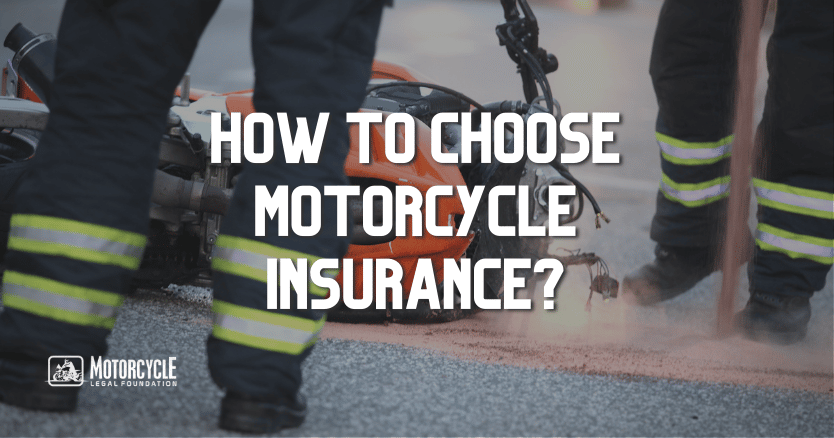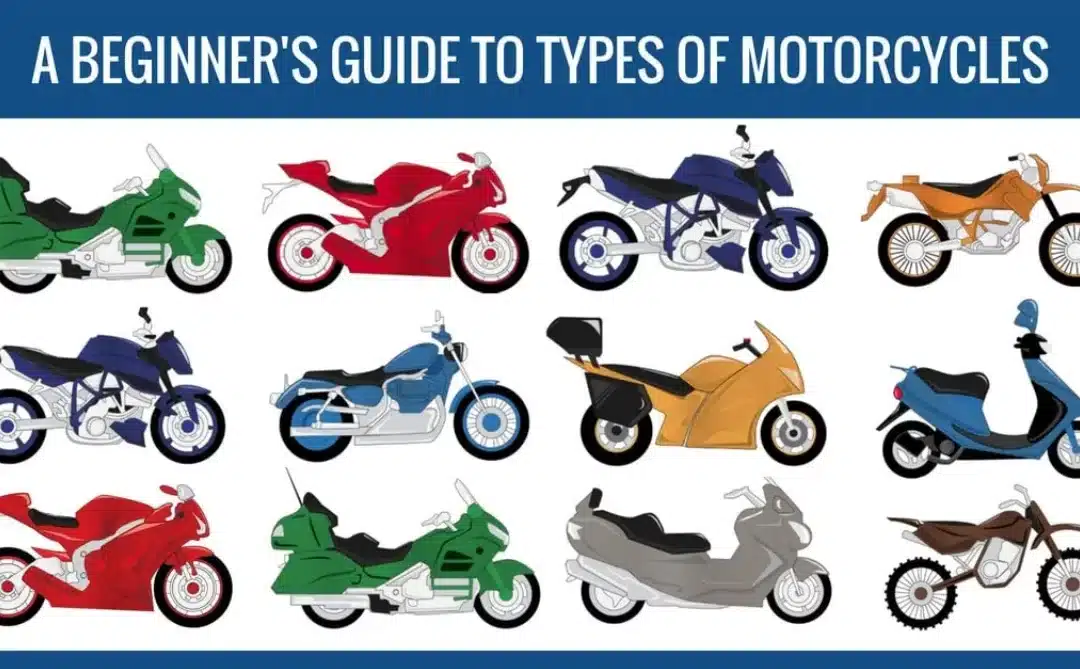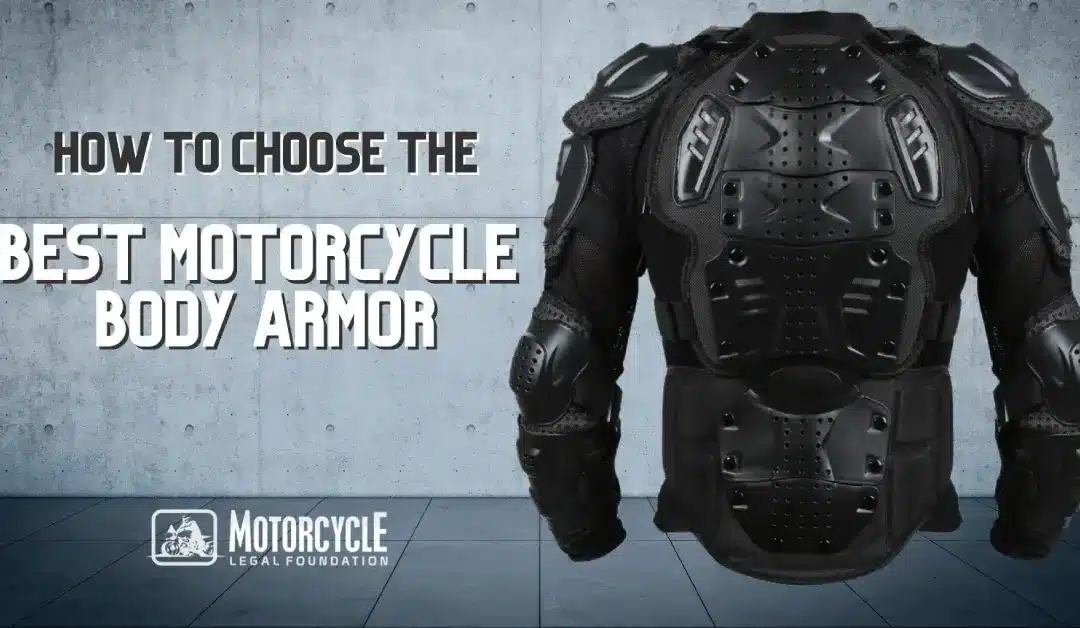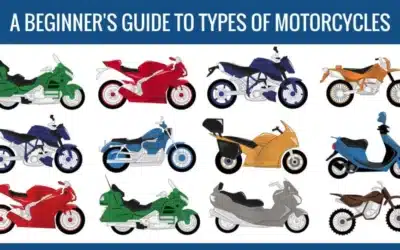Most states require that motorcycle owners comply with financial responsibility laws. States want to know that you can pay for personal injuries and property damage resulting from accidents that you caused. Some states, such as Florida, require proof that you have the financial means to pay claims arising from accidents that are your fault in order to register a motorcycle.
You have the opportunity to purchase coverage that pays you in case you have a claim against an uninsured motorist or if your bike is damaged or stolen. In order to get the best deal and the best coverage, you need to know the basics of motorcycle insurance.
Need Motorcycle Insurance?
Enjoy your ride while feeling safe with the best insurance coverage.
What is Motorcycle Insurance?
Motorcycle insurance pays claims arising from the ownership and use of a motorcycle. You pay a premium to one of the many motorbike insurers, and they issue a policy of insurance in which they agree to pay for claims within the coverage limits of the policy.
Insurance companies offer different types of coverage, including:
- Liability or bodily injury
- Property damage
- Collision
- Comprehensive
- Medical payments
The primary advantage of having insurance coverage is that claims arising out of the ownership and use of a motorcycle are paid by the insurance company, so it does not come out of your pocket. For example, if someone steals your motorcycle, you can file a claim under the comprehensive coverage and the insurance company pays you the value of the motorcycle according to the terms of the policy.
The cost of the insurance depends on the amount of coverage that you choose and other factors, such as where you live and your driving record. There are motorcycle insurance agencies you can contact to get quotes on the cost of a policy.
The Importance of Having Motorcycle Insurance
Although Florida and other states may not specifically require liability insurance, the easiest way to satisfy financial responsibility laws is by purchasing a motorcycle insurance policy with liability coverage through an insurance agent, broker or directly from an insurance company. Now let’s be honest, who wants to pay for an insurance policy that protects other people and their property and that you may never need to use?
The answer is that liability insurance actually protects you from having to sell your motorcycle and probably most of the assets you own to pay for the medical bills, lost wages, pain and suffering, and other damages sustained by the person who was injured or killed in a crash that was your fault. As far as paying for something that you probably won’t need, consider the fact that with 8.3 million motorcycles registered in the U.S. in 2020, there were 83,000 accidents resulting in personal injuries and 5,579 resulted in fatalities.
Accidents with motorcycles happen, and when they do, people get hurt or die. If the accident is your fault, the insurance company that issued your motorcycle insurance policy provides a lawyer to defend you against claims by anyone injured or whose property was damaged. It also pays to settle claims.
How To Choose Motorcycle Insurance?
Once you decide to get motorcycle insurance, you must decide between the types of insurance coverage, which range from the minimum liability coverage required by state law to full coverage insurance motorcycle insurance agencies offer. Once you know the types of motorcycle insurance that you want, you must decide on the amount of coverage you need to comply with the law and the amount of coverage you want to provide you with adequate protection.
For example, if you have a home and other assets to protect, the amount of insurance you need to comply with the law may not adequately protect you and the assets you own if someone is injured or killed in an accident that was your fault. You may want to increase the amount of the insurance coverage to protect you against having to pay part of a claim from your own money or assets.
Main Types of Insurance Coverage
Here are a few of the different types of insurance coverage available to you. Just keep in mind that you may not need or want all of them, and some of them may not be available at all insurance companies.
Liability insurance
If you live in one of the 47 states that require it, liability coverage keeps you on the right side of the law to avoid getting a ticket and paying a fine. As important as complying with the law is the fact that liability insurance coverage prevents financial ruin when someone injured in a motorcycle accident that you caused sues you for damages.
Liability coverage includes payment of the legal fees for an attorney to defend you. It also pays the settlement or verdict after trial up to the amount of the insurance coverage.
You will see liability insurance coverage limits written as three separate numbers representing dollar amounts for required coverage. For instance, the law in a state may require minimum liability coverage of 25/50/10 which means the insurance company agrees to pay up to $25,000 for injuries to one person in a crash that was your fault and as much as $50,000 when multiple people suffer injuries in a single accident. The last number means you have $10,000 in coverage to pay property damage claims made against you.
Buying the minimum amount of liability insurance may comply with state law and keep your insurance premiums low, but it could end up costing you. If someone is seriously injured in a crash that you caused and has damages of $250,000, your insurance company will only pay up to the limits of your policy. If you only got insurance for the state minimum of $25,000/$50,000/$10,000, your insurer pays the $25,000 policy limit. The remaining $225,000 in damages is your responsibility.
Collision insurance
Inclusion of collision coverage as part of your motorcycle insurance policy protects pays for the repair of your motorcycle damaged in a crash regardless of who was at fault. For example, more than 41% of motorcycle crashes are single-vehicle incidents, so if you lose control of your motorbike on a rain-soaked road and crash, your insurance company pays to repair or replace your motorcycle.
Collision insurance does not cover you for claims filed by other people for damage caused to their vehicles or property. That would be covered by the property damage portion of the liability coverage of your policy. Also be aware that collision coverage is optional, so it is not automatically included when you get a motorcycle insurance policy with liability coverage.
It is an optional coverage with a separate premium. Collision coverage also comes with a deductible, which is what you pay toward a claim before receiving anything from the insurer. For example, if you have a $250 deductible and cause $300 in damage when you hit a curb and damage the front wheel, the insurance company pays $50 and you must pay the deductible amount.
Comprehensive insurance
Comprehensive insurance provides coverage for risks that are not the result of a crash. A few of those risks include:
- Theft of your motorcycle
- Vandalism
- Fire
- Flood
- Hail
- Falling objects
If a tree limb falls on your parked motorcycle and damages it, a motorcycle insurance company will pay to have it repaired or replaced. As with collision insurance coverage is optional, and there is a deductible.
Medical payments (MedPay) coverage
If you are injured in an accident while riding a motorcycle, medical payments coverage pays your medical expenses and those of a passenger riding with you up to the policy limits that you selected. Expenses paid through MedPay coverage include:
Health insurance deductibles and copays
Hospital charges
Fees charged by doctors and other medical professionals
Ambulance services
Prescription medications
Nursing and home health care services
MedPay coverage generally covers what is not paid through your health insurance.
Guest-passenger liability insurance
Depending on the insurance laws in your state and the insurance company you choose, the medical expenses of a passenger injured while riding with you may be covered through the MedPay coverage or liability coverage of your motorcycle insurance policy. If it is not, then your insurer may offer it as optional coverage.
Uninsured (UM) and underinsured (UIM) motorist coverage
Uninsured and underinsured motorist coverages are required in less than one-half of the states. It is good coverage to have even when it is not required by law because it pays when you are injured in an accident caused by a motorist who does not have insurance or whose coverage limits are too low to adequately compensate you for the damages that you suffered.
When injured in a collision caused by the fault of another driver who does not have insurance or whose insurance is inadequate to fairly compensate you, you file a claim for damages against the company that issued your motorcycle insurance. Your company handles the claim as it would a claim filed by a third party, so you must prove the other driver was at fault.
Personal injury protection (PIP)
So-called “no-fault states” require that motorists have PIP coverage. It makes your insurance company responsible for paying medical expenses when drivers and their passengers or pedestrians are injured in motor vehicle accidents. Instead of suing the other driver for payment through their liability insurance, you file a claim with your own insurer.
States with no-fault laws limit your ability to sue other drivers for damages to only those accidents causing serious and life-threatening injuries. Although PIP is mandatory in some states, it is typically not required or available for motorcycles.
Pay-per-mile motorcycle insurance
If you only get the chance to ride on the weekends or perhaps not even that often,insurance policies that you take out for six months or a year have been the only option available until now. A new type of motorcycle insurance lets you pay only for the miles that you travel.
The availability of pay-per-mile motorcycle insurance is currently limited. Companies offering it require the use of a device installed on your motorcycle or use of an app to track the number of miles that you travel each month on your motorcycle.
You pay a set monthly fee to keep the policy active along with a per-mile charge. You’ll need to estimate your anticipated monthly mileage in order to compare the cost of pay-per-mile motorcycle insurance against the cost of traditional types of policies.
Tips for Affordable Motorcycle Insurance
Keeping the cost of motorcycle insurance affordable is not impossible to do, but you need to decide on the coverage you want and compare rates offered by different companies. Here are some tips for affordable motorcycle insurance.
Enroll in specialized classes
Some insurance companies offer discounts on the cost of insurance to riders who successfully complete motorcycle safety classes or driving skills courses. The theory being that safer, better-skilled riders are less likely to be involved in accidents.
Join a biker club
Check with your insurance company to find out if it offers discounts to riders who belong to riding organizations, such as:
- Harley Owners Group (HOG)
- Honda Riders Club of America
- American Motorcycle Association
- Women in the Wind International
The organization that you belong to may have information about insurers that offer cheap motorbike insurance to its members.
Safety features
If you own a late-model motorcycle, anti-theft technology and anti-lock brakes may reduce the cost of insurance. Ask your insurance company about discounts it offers for safety and other equipment, and let them know which of those features are on your motorcycle.
Bundle insurance policies
Insurance companies want your business, so most of them offer discounts when you use them for other types of insurance that you need, such as auto, home, and watercraft. For example, insuring your car and motorcycle with one company may get you a rate reduction over insuring with different insurers.
Short-term coverage
If you live where winter weather is not conducive to riding a motorcycle, ask your insurance company whether it offers the option to switch to storage coverage or cancel it during the months that the motorcycle is off the road. Another option may be a short-term policy, such as one for only six months that would cover you during riding months.
Other types of discounts
Discount programs may differ from one company to another, so ask your insurer or your agent about programs that are offered. For example, you may get a safe-rider discount for not having any accidents, or the company may offer discounts for paying the full cost of the policy upfront instead of monthly or quarterly.
Conclusion
Now that you know more about the coverages available when you need motorcycle insurance and the factors that affect how much you pay for it, it’s time to save money by taking a few minutes to compare different insurance companies in order to find the best place to get motorcycle insurance with the best coverage and at the lowest cost.
Remember that you have the ability to control your insurance costs by tailoring the coverage to your needs and applying the tips for affordable motorcycle insurance that we offered. Now, use that information to shop for free quotes for motorcycle insurance.
Need Motorcycle Insurance?
Enjoy your ride while feeling safe with the best insurance coverage.








